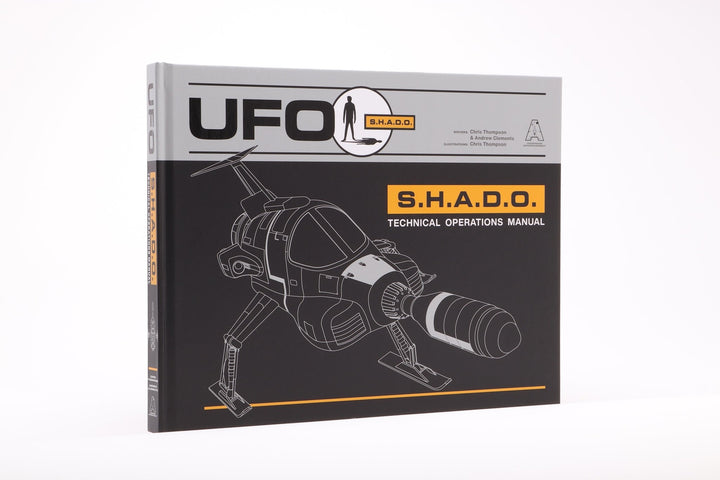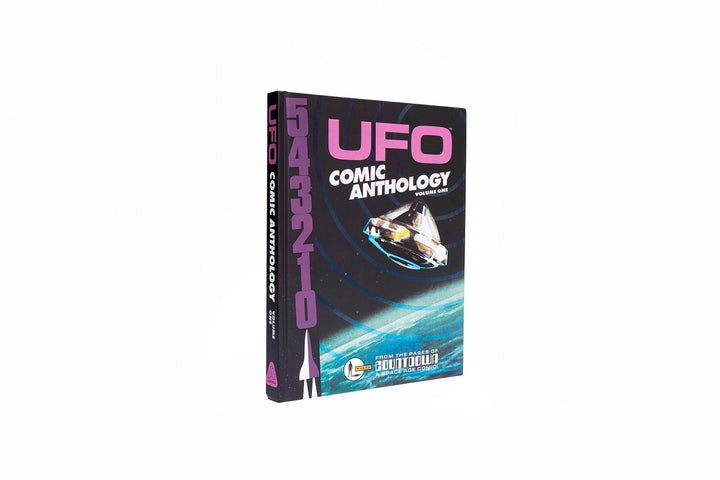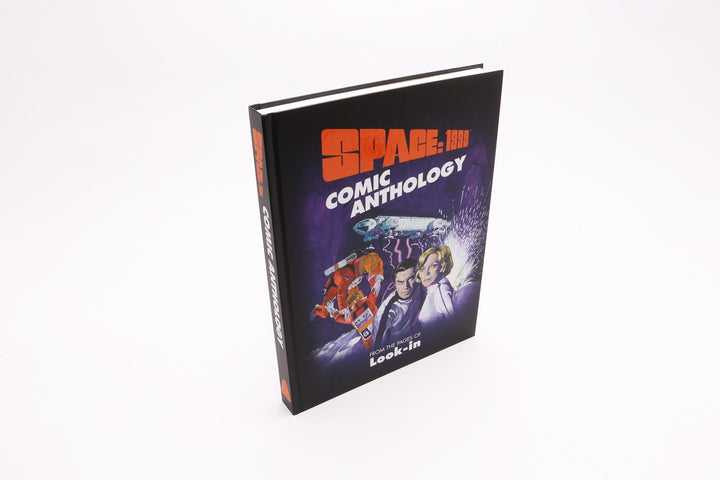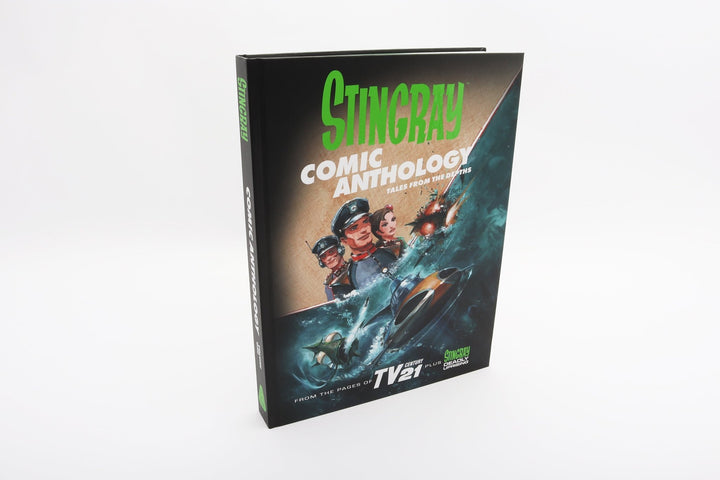INTERVIEW: Jeffrey Morris on Space:1999 Eagle documentary!
Share
Share

A lifelong fan of Space:1999 and in particular the show's star vehicle the Eagle, writer and director Jeffrey Morris is launching his own giant leap for mankind with a new crowd-funded documentary about the perennially popular spacecraft! The Eagle Has Landed launches on Kickstarter tomorrow as part of the Breakaway Day celebrations, and we caught up with Jeffrey to learn more about this exciting project!
What was your first experience of Space:1999?

I spent my childhood in Tempe, Arizona. I was a child (seven at the time) who was deeply enthralled by the Apollo program and always seeking out anything space-related that I could get my hands on. At the time I was determined to be an astronaut and travel to the Moon and beyond. I saw a Fall TV preview on the local NBC affiliate that was showcasing upcoming programs. There was a teaser for a new show called Space: 1999. Based on seeing the imagery in that short trailer, I nearly lost my mind. The thing that struck me the most in the video was the Eagle. I had to know more about it. It looked like a suped-up Lunar Module! From that point forward, I was desperate to watch the show. The first episode, Breakaway blew my mind. While I may have been a little kid, I totally got it. I loved everything from Moonbase Alpha and its technology to the show’s amazing soundtrack by Barry Gray. I also related to the characters—especially Victor Bergman. The Professor became a bit of a role model for me growing up. His love of science and the unknown was highly motivating—as was his warmth and depth.
How important an element was the Eagle transporter to your enjoyment of the show?
For me, the Eagle was the main draw of the program. I considered it (and its various incarnations) to be one of the show’s main characters. I would spend each episode looking forward to the next time they flew an Eagle to a new adventure and winced in pain when one crashed. I even tried to build my own version of an Eagle cockpit in my closet using every button-laden toy I possessed as instrumentation. I eventually got my hands on the die-cast Dinky Toys Eagles. And while I may have been disillusioned by the green color scheme (I wanted realism!), I was tremendously happy to finally get my hands on one. I would play with it during reruns of the show, reenacting what I saw on screen—with the exception of crashing and destroying it, of course!
To what extent did the series influence your professional career?
I was recently pondering this question. While 2001: A Space Odyssey and Star Wars were major motivators for my career in film production, I’d have to say that Space: 1999 was the thing that ignited the initial spark. There was something about the look and feel of the show that inspired my imagination. The execution was unforgettable from the costumes to the props and set designs. It was also huge in scale and cinematic in every aspect of the production. It might as well have been on the big screen with such enormous scope and quality. The world building was second to none at the time. The attention to detail was insane and has directly impacted all of the sci-fi worlds I’ve been developing. Especially those set in space like my forthcoming feature film Persephone.
How did the idea to produce a documentary about the Eagle transporter come about?
I think the Eagle design is timeless and perfectly balanced from an aesthetic standpoint. It feels tangible and connected to reality. The elements of real spacecraft like the LEM and Apollo CSM were present in the Eagle, like RCS thrusters and engines that felt reminiscent of the Saturn V. It felt connected to the time as a seemingly-realistic projection into the future. That makes it a standout among most sci-fi spacecraft. Typical designs are going for flash and appeal as opposed to realism. More importantly, i think its staying power stems from the fact that those of us who grew up with playing with Eagle toys felt like they were from OUR future—a world we were going to grow up and live in a few decades ahead in time. Unfortunately, that futuristic world of Eagles and Moonbases and space stations never came to pass. I think we lost a dream of tomorrow and have been looking for it ever since. The Eagle represents the lost future we all wish we could have lived in. Most of us can’t let it go.
While I am a collector of various sci-fi models and toys, the Eagle has always been my absolute favorite. I also keep running into people around the world who share the same interest and love. I had to explore and understand the roots of this obsession. That’s what the documentary is all about. It’s not really a story about Space: 1999. it’s much more about the continuing impact of the Eagle itself.

Who will you be interviewing as part of this documentary?
Barbara Bain, Nick Tate, Brian Johnson, Jamie Anderson, Chris Thompson. VFX supervisor Bill George, Apollo astronaut Charles Duke, Star Trek luminaries Michael & Denise Okuda, Eagle and Space: 1999 super fans Gordon Moriguchi and Warren Friedrich, Jan Wenneberg—who recently built a spectacular 1/4-scale Eagle in his garage, and a few yet to be announced surprise guests.
What kind of rewards can Kickstarter backers expect?
Aside from digital access to the final film when it’s completed, we will also be providing items like exclusive posters and digital wallpapers, an exclusive hard-bound coffee table book, exclusivevdideo chats with myself, Nick Tate and Brian Johnson, dinners with Nick Tate and Brian Johnson at their respective locations of Los Angeles and London, an exclusive pre-built Eagle with special markings from MPC, and more!
Is there one particular ‘unlikely yet possible’ goal you have for the documentary that could only be achieved by all fans pitching in to help with its production?
I have been discussing the creation of new visual effects with Brian Johnson. He and I would like to work together to produce some new sequences of shots combining miniatures and motion control photography with spectacular computer-generated imagery. We are also hoping to produce a virtual walk around of the Eagle inside its main hangar where I can shot the audience all of the key elements of the design at full scale. We would use technology similar to that used on the Star Wars series The Mandalorian to accomplish this. You can see a taste of this approach in the Kickstarter promotional video where we used a virtual set to make it appear that I was walking around inside an Eagle passenger module. Lastly, we want to work with a team that builds sets for Star Wars and Marvel Films at Pinewood Studios in London to recreate an interior of the Eagle at full-scale and at museum quality. This would be completed and available for fans to tour for the shows 50th Anniversary celebrations in London in 2025. We’ve already created detailed plans for this project. All we need is the money to make it happen.
If you'd like to help make The Eagle Has Landed happen, you can support the Kickstarter here, or learn more information about the film on its website here!





![Fireball XL5 World Space Patrol Technical Operations Manual [HARDCOVER BOOK] - The Gerry Anderson Store](http://gerryanderson.com/cdn/shop/files/fireball-xl5-world-space-patrol-technical-operations-manual-hardcover-book-290050.jpg?v=1711729272&width=720)



![Stingray Comic Anthology Volume Two – Battle Lines [HARDCOVER] - The Gerry Anderson Store](http://gerryanderson.com/cdn/shop/files/stingray-comic-anthology-volume-two-battle-lines-hardcover-107681.jpg?v=1738856151&width=720)
![Space: 1999 and UFO Book Bundle - Signed Limited Editions [HARDCOVER NOVELS] - The Gerry Anderson Store](http://gerryanderson.com/cdn/shop/files/space-1999-and-ufo-book-bundle-signed-limited-editions-hardcover-novels-589446.jpg?v=1718836845&width=720)
![Stingray WASP Technical Operations Manual Special Limited Edition [HARDCOVER BOOK] - The Gerry Anderson Store](http://gerryanderson.com/cdn/shop/files/stingray-wasp-technical-operations-manual-special-limited-edition-hardcover-book-991914.jpg?v=1732922875&width=720)
![Stingray: The Titanican Stratagem – Signed Limited Edition [HARDCOVER NOVEL] - The Gerry Anderson Store](http://gerryanderson.com/cdn/shop/files/stingray-the-titanican-stratagem-signed-limited-edition-hardcover-novel-129251.jpg?v=1740558711&width=720)






